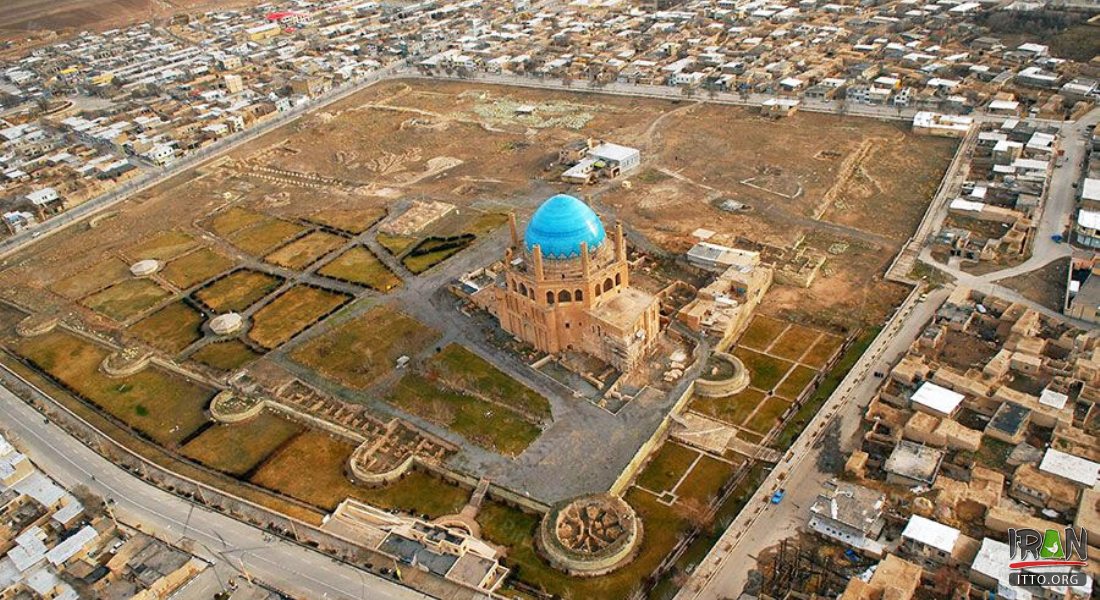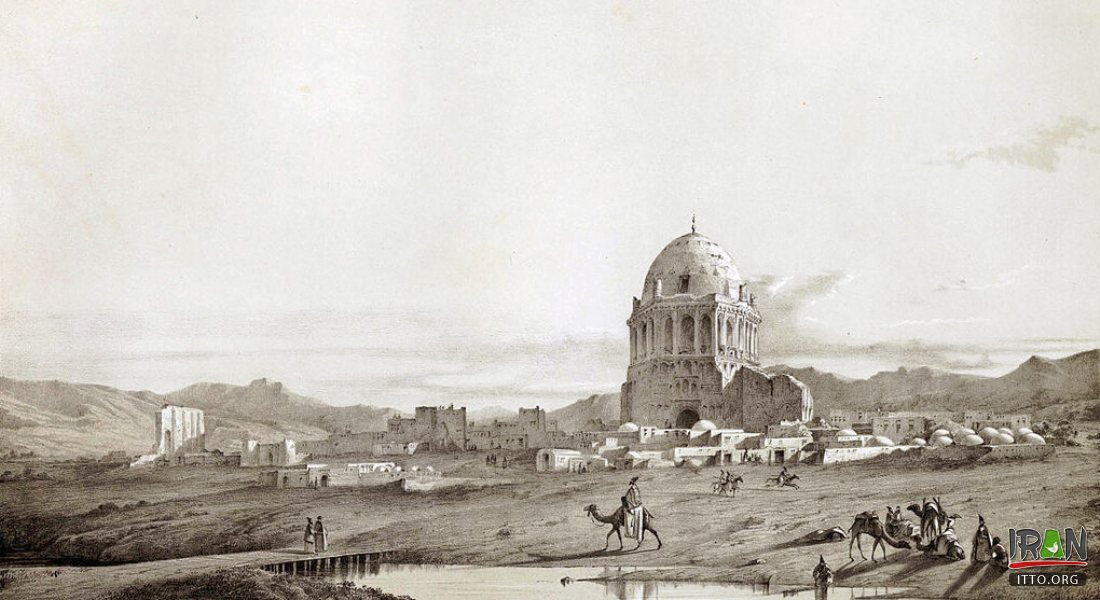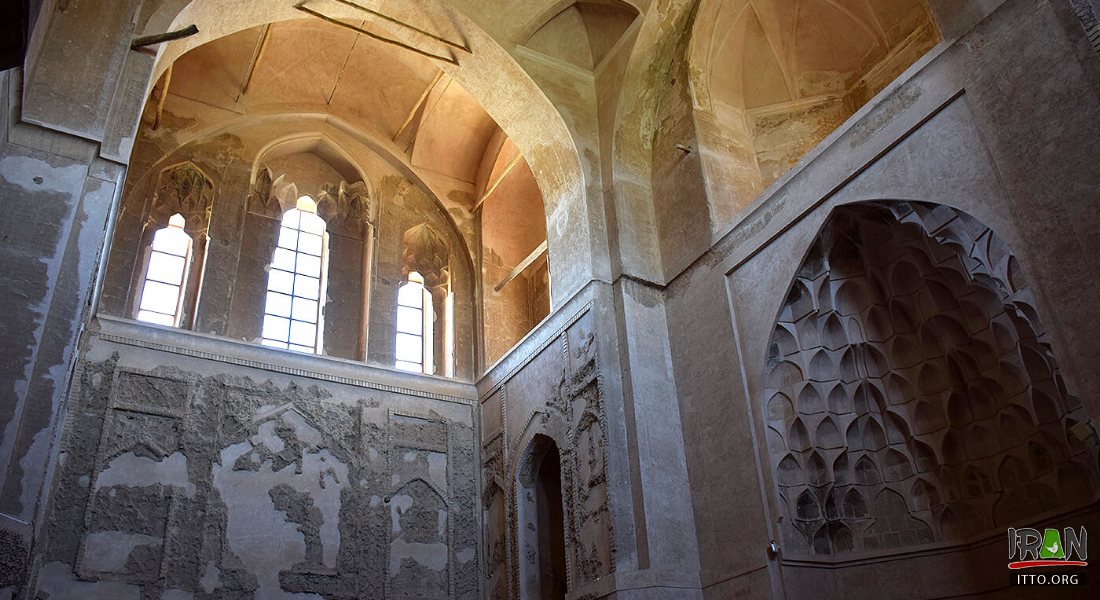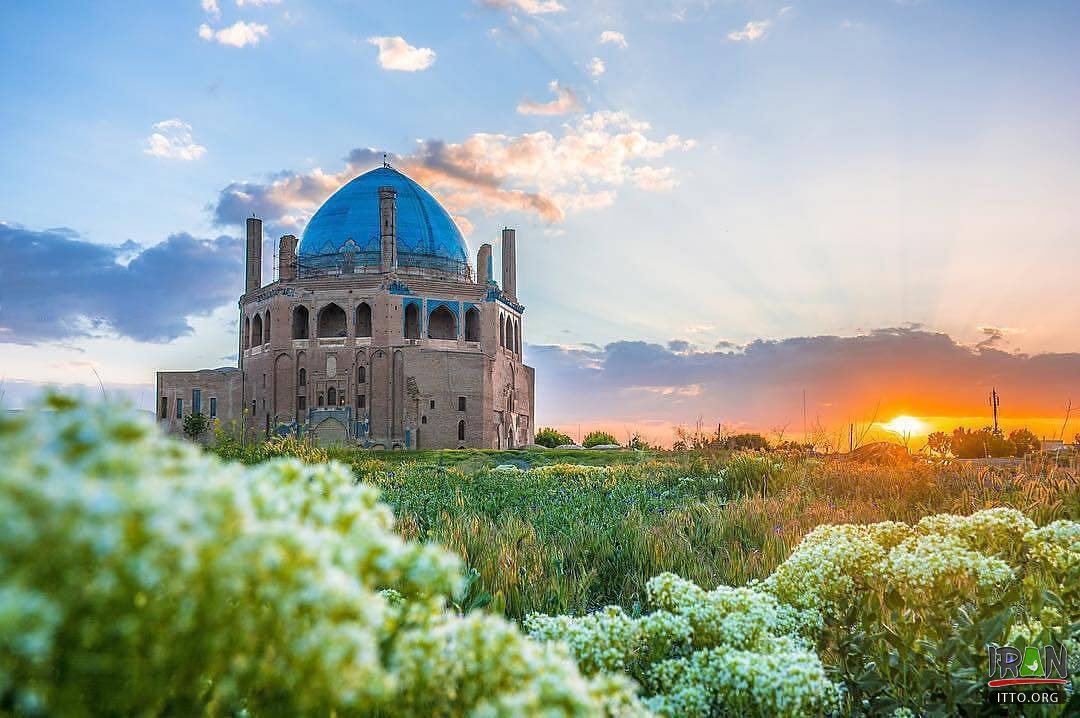The UNESCO-listed Mausoleum of Oljaytu, which is commonly known as “Dome of Soltaniyeh” (Soltaniyeh Cupola), is one of Iran’s must-visit destinations for those interested in traditional Persian and genuine Islamic architecture.
A World Heritage, the mausoleum is surmounted by one of the largest brick domes in the globe, though some mistakenly refer to it as “the largest dome in the world”. The monument stands tall in a town of the same name, Soltaniyeh, west-central Zanjan province.
Meaning “Town of the Sultans”, Soltaniyeh was briefly the capital of Persia’s Ilkhanid dynasty (a branch of the Mongol dynasty) during the 14th century.

The old fortification was a plot of land with an area of 18 hectares, encircled by a wall which was the characteristic of old cities. It is interesting to mention that the dome was used as a template in construction of the big dome of Florence, Italy. There are eight minarets around the dome.
The 14th-century structure is highly recognized as an architectural masterpiece particularly due to its innovative double-shelled dome and elaborate interior decoration. The very imposing dome stands about 50 meters tall from its base. Covered with turquoise-blue faience tiles, the stunning structure dominates the skyline of Soltaniyeh, an ancient city in Zanjan province, north-western Iran.
The interior has long been under renovation, chockfull of scaffolding poles. However, its decoration is such impressive that scholars including A.U. Pope described it as ‘anticipating the Taj Mahal’. It is the earliest existing example of the double-shelled dome in Iran.

Soltaniyeh historical dome, the largest brick dome in the world, was built commissioned by Sultan Mohammad Khodabandeh (Oljeitu) in Soltaniyeh city, the capital of Ilkhanid dynasty from 1302 to 1312.
A great-grandson of Hulegu, founder of the Il-Khanid dynasty, Oljaytu was a Mongol ruler who, after dabbling in various religions, adopted the Shia name Mohammed Khodabandeh.
According to the UNESCO, the Mausoleum of Oljaytu is an essential link and key monument in the development of Islamic architecture in central and western Asia. Here, the Ilkhanids further developed ideas that had been advanced during the classical Seljuk phase (11th to early 13th centuries), during which the arts of Iran gained distinction in the Islamic world, thereby setting the stage for the Timurid period (late 14th to 15th centuries), one of the most brilliant periods in Islamic art.

This dome has been built like the Seljuq architectural style in three stories. The shape of the plan is quadrilateral at the first level, but at the second and third levels became octagonal. Also, this dome has eight minarets. The Dome of Soltaniyeh has been made of brick with the cover of turquoise mosaic tiles.
UNESCO says, “Excavations carried out in the 790-ha Mausoleum of Oljaytu property have revealed additional vestiges of the old city, and a large part of this property has retained its archaeological character. As the ancient capital of the Ilkhanid dynasty, Soltaniyeh represents an exceptional testimony to the history of the 13th and 14th centuries in Iran.”
The very large dome is the earliest extant example of its type, and became an important reference for the later development of the Islamic dome. Similarly, the extremely rich interior of the mausoleum, which includes glazed tiles, brickwork, marquetry or designs in inlaid materials, stucco, and frescoes, illustrates an important movement towards more elaborate materials and themes.
In the Persian urban designing, domes in places of worship and public places, including traditional bazaars, caravansaries, schools and baths, are designed in such a way that can be seen from different parts of urban or rural area.
The domes are normally double-shelled. While the interior shell is designed to carry the weight of the structure, the exterior shell serves as both a decorative element and as insulation against the elements. The aerodynamic shape of the domes also makes the structures more sustainable.







